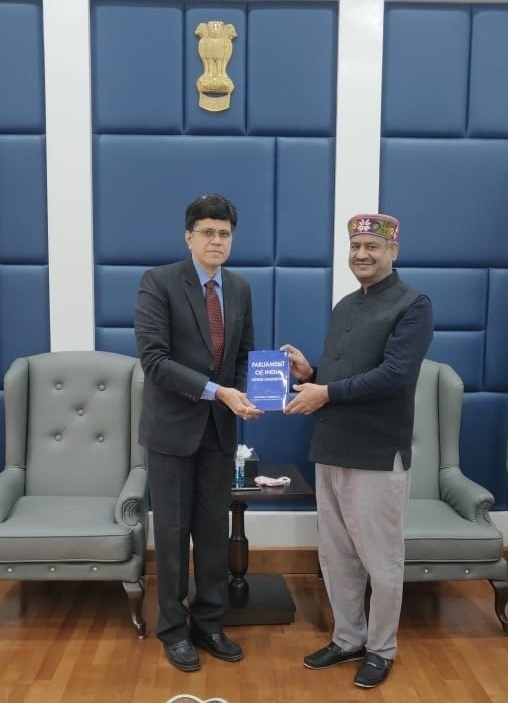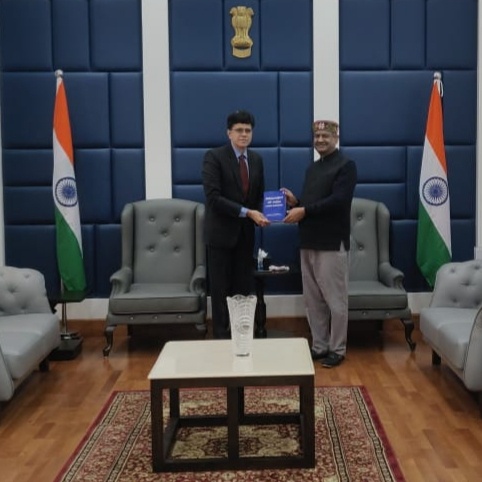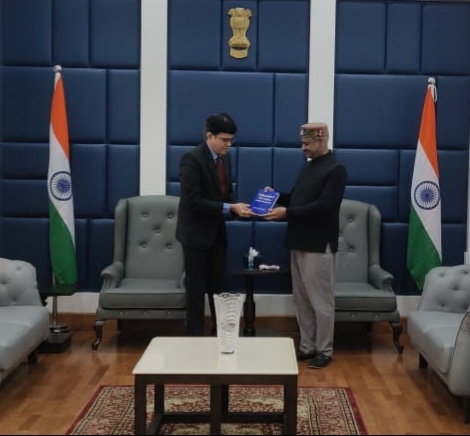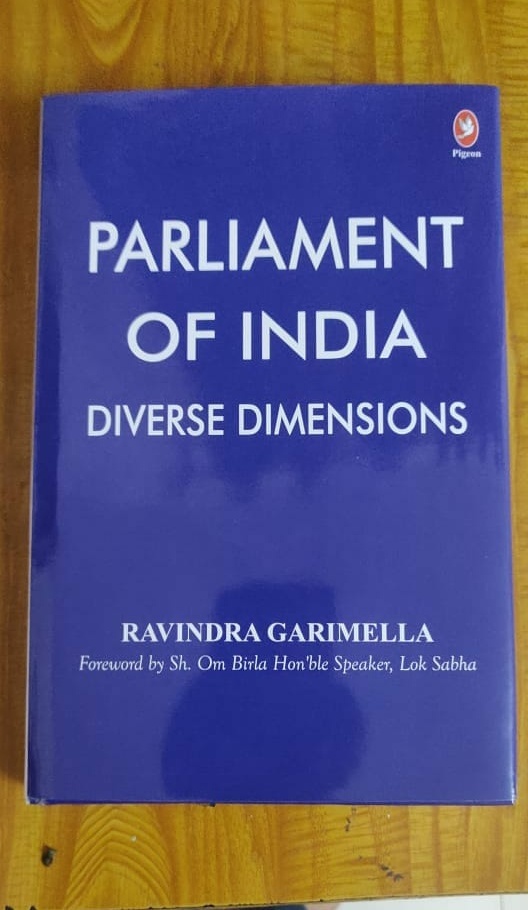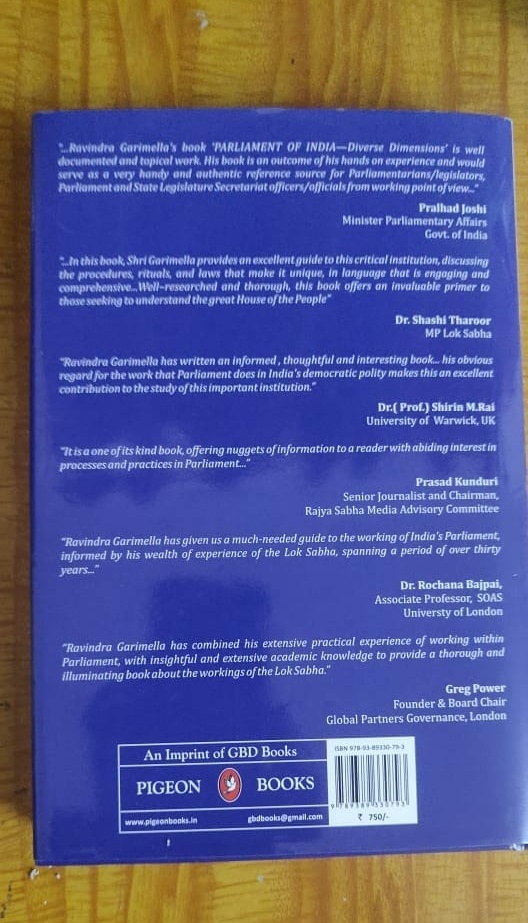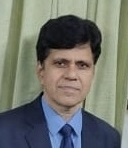Its amazing significance
India at 75! These three magical words evoke an immense sense of pride within the hearts of all Indians as we celebrate 75th anniversary of Indian Independence. In this momentous occasion Indian national Flag stands out as one of the most visible manifestation our democratic polity. In this context it of great interest to note significant milestones vis-à-vis evolution of TIRANGA – TRICOLOUR as the Indian National Flag is popularly and lovingly known. The thrust of this article is to bring to fore the amazing journey of evolution of Indian National Flag (facts gleaned from various sources).
Genesis
2. As per available sources it was between 1904 and 1906 that first Indian Flag came into existence. It was by an Irish disciple sister Nivedita.
Unofficial Version in 1906
3. In India the first national flag in India is said to have been hoisted on 07 August, 1906 in the Parsee Bagan Square (Green Park, Calcutta, source Deccan Herald). The flag was composed of three horizontal strips of red, yellow and green with Vande Mataram in the middle. It is believed to have been designed by Freedom Fighters Sachindra Prasad Bose and Hemchandra Kanungo. The red strip on the flag had sun and a crescent moon and the green strip had eight half open lotuses. The second flag was hoisted in Paris by Madam Bhikaji Cama and her band of exiled revolutionaries in 1907. Being similar to the first flag the modification that being the top strip had only seven stars denoting the Saptarishi. This flag was also exhibited at a socialist conference in Berlin (source Deccan Herald). Another source indicates that Madam Bhikaji Cama unfurled the first version of Indian national flag – a tricolor of green saffron and red strips at the International Socialist Congress held at Stuttgart, Germany in 1907.
4. As per this very source Lokmanya Bal Gangadhar Tilak and Dr. Annie Besant hoisted the third flag during the Home rule movement. This flag had five red and four green horizontal strips arranged alternately with seven stars in Saptagiri configuration. One corner of the flag had a star and crescent and on the other corner of the flag was the Union Jack (at the pole end)
Origin of Indian Flag
5. The origin of the Indian Flag in its present format is based on flag designed by Shri Pingali Venkayya a Andhra youth who presented this to Mahatma Gandhi at All India Congress session at Bezwada (now Vijayawada) in 1921. Shri Pingali Venkayya was an Indian Freedom Fighter and a staunch follower of Mahatma Gandhi. This flag designed, which was presented by Shri Pingali Venkayya and presented to Gandhiji, consisted of the colours associated with the two principal religions, red for the Hindus and green for Muslims (This flag was based on Swaraj flag). Gandhiji modified the flag by adding a white strip representing the remaining religious communities in India. Hence the tricolor with the spinning wheel on the white background was ‘unofficially’ adopted at AICC Bezawada Conference in 1921. This was the origin of ‘Tiranga’/Tricolour.
6. The flag adopted by Congress at 1921, AICC Session came to be associated with nationhood for India and it was officially recognized at the AICC session held at Karachi in August, 1931.
This was the landmark in the history of the Indian flag
A resolution was adopted that tricolor as India’s national flag. At the same time, the current arrangement of stripes and the use of deep saffron instead of red were approved. To avert any communal or sectarian associations or interpretations to the original proposal, new attributes were associated saffron, white and green stripes. These were, Saffron for courage and sacrifice, White for peace and truth and Green for faith and chivalry.
Adoption of Indian National Flag
7. Watershed moment came on 22 July, 1947 when a resolution moved by Pandit Jawaharlal Nehru, National Flag of India was adopted in its present form by the Constituent Assembly. The spinning wheel in the centre of flag was replaced by blue chakra- the dharma chakra. It would be great interest to note views expressed by Pandit Jawaharlal Nehru while moving the resolution. Relevant extracts from Constituent Assembly debates dated 22 July, 1947 are as under:
“Resolved that the national Flag of India shall be horizontal tricolor of deep Saffron (Kesari), white and dark green in equal proportion. In the centre of the white band, there shall be a Wheel in navy blue to represent the Charkha. The design of the Wheel shall be that of the Wheel. (Chakra) which appears on the abacuse of the Sarnath, Lion Capital of Asoka. The diameter of the Wheel shall approximate to the width of the white band. The ratio of the width to the length of the Flag shall ordinarily be 2:3.”
** ** ** **
I feel at the present moment for behind this Resolution and the Flag which I have the honour to present to this House for adoption lies history, the concentrated history of a short span in a nation’s existence. ‘Nevertheless, sometimes in a brief period we pass through the track of centuries. It is not so much the mere act of living that counts but what, one does in this brief life that is ours; it is not so much the mere existence of a nation that counts but what that nation does during the various periods of its existence; and I do venture to claim that in the past quarter of a century or so India has lived and acted in a concentrated way and the emotions which have filled the people of India represent not merely a brief spell of years but something infinitely more. They have gone down into history and tradition and have added themselves on to what vast history and tradition which is our heritage in this country.
So, when I move this Resolution, I think of this concentrated history through which all of us have passed during the last quarter of a century. Memories crowd upon me. I remember the ups and downs of the great struggle for freedom of this great nation. I remember and many in this House will remember how we looked up to this Flag not only with pride and enthusiasm but with a tingling in our veins; also how; when we were sometimes down and out, then again the sight of this Flag gave us courage to go on.
Then, many who are not present here today, many of our comrades who have passed, held on to this Flag, some amongst them even unto death and handed it over as they sank, to others to hold it aloft. So, in this simple form of words, there is much more than will be clear on the surface. There is the struggle of the people for freedom with all its ups and downs and trials and disasters and there is, finally today as I move this Resolution, a certain triumph about it a measure of triumph in the conclusion of that struggle.
** ** ** **
This Resolution defines the Flag which I trust you will adopt. In a sense this Flag was adopted, not by a formal resolution, but by popular acclaim and usage, adopted much more by the sacrifice that surrounded it in the past few decades. We are in a sense only ratifying that popular adoption. It is a flag which has been variously described.
Some people, having misunderstood its significance, have thought of it in communal terms and believe that some part of it represents this community or that. But I may say that when this Flag was devised there was no communal significance attached to it. We thought of a design for a Flag which was beautiful, because the symbol of a nation must be beautiful to look at. We thought of a Flag which would in its combination and in its separate parts would somehow represent the spirit of the nation, the tradition of the nation, that mixed spirit and tradition which has grown up through thousands of years in India. So, we devised this Flag.
** ** ** **
It will be seen that there is a slight variation from the one many of us have used during these part years. The colours are the same, a deep saffron, a white and a dark green.
In the white previously there was the Charkha which symbolized the common man in india, which symbolized the masses of the people, which symbolized their industry and which came to us from the message which Mahatma Gandhi delivered. (Cheers)
Now, this particular Charkha symbol has been slightly varied in this Flag, not taken away at all. Why then has this been varied? Normally speaking, the symbol on one side-of the Flag should be exactly the same as on the other side. Otherwise, there is a difficulty which goes against the rules. Now, the Charkha, as it appeared previously on this Flag, had the wheel on one side and the spindle on the other if you see the other side of the Flag, the spindle comes the other way and the wheel comes this way; if it does not do so, it is not proportionate, because the wheel must be towards the pole, not towards the end of the Flag. ‘there was this practical difficulty.
Therefore, after considerable thought, we were of course convinced that this great symbol which had enthused people should continue but that it should continue in a slightly different form, that the wheel should be there, not the rest of the Charkha, that is the spindle and the string which created this confusion, that the essential mitt of the Charkha should be there, not the rest of the Charkha, that is the spindle and the string which created this confusion., that the essential (motif)of the Charkha should be there, that is the wheel. So, the old tradition continues in regard to the Charkha and the wheel. But what type of wheel should we have? Our minds went back to many wheels but notably one famous wheel, which had appeared in many places and which all of us have seen, the one at the top of the capital of the Asoka column and in many other places. That wheel is a symbol of India’s ancient culture, it is a symbol of the many things that India had stood for through the ages. So we thought that this Chakra emblem should be there, and that wheel appears.
For my part, I am exceedingly happy that in this sense indirectly we have associated with this Flag of our not only this emblem but in a sense the name of Asoka, one of the most magnificent names not only in India’s history but in world history. I have mentioned the name of Asoka I should like you to think that the Asokan period in Indian history was essentially an international period of Indian history. It was not a narrowly national period. It was a period when India’s ambassadors went abroad to far countries and went abroad not in the way of an Empire and imperialism but as ambassadors of peace and culture and goodwill. (Cheers.) Therefore this Flag that I have the honour to present to you is not I hope and trust, a Flag of Empire, a Flag of Imperialism – a Flag of domination over anybody, but a Flag of freedom not only for ourselves but a symbol of freedom to all people who may see it. (Cheers) And wherever it may go- and I hope it will go far, not only where Indians dwell as our ambassadors and ministers but across the far seas where it may be carried by Indian ships, wherever it may go it will bring a message, I hope, of freedom to those people, a message of comradeship, a message that India wants to be friends with every country of the world and India wants to help any people who seek freedom. (Hear, hear)
That I hope will be the message of this Flag …
** ** ** **
It is stated in this Resolution that the ratio of the width to the length of the Flag shall ordinarily be 2:3. Now you will notice the world ‘ordinarily’. There is no absolute standard about the ratio because the same Flag on a particular occasion may have a certain ratio that might be more suitable or on any other. Occasion in another place the ratio might differ slightly. So there is no compulsion about this ratio.
But generally speaking, the ratio of 2:3 is a proper ratio. Sometimes the ratio 2:1 may be suitable for a Flag flying on a building. Whatever the ratio may be the point is not so much the relative length and breadth, but the essential design. So, Sir, now I would present to you not only the Resolution but the Flag itself.
There are two of these National Flags before you. One is on silk-the one I am holding and the other on the side is of cotton Khadi.
I beg to move this Resolution. (Cheers)
** ** ** **
Mr. President: I have not notice of three amendments to this Resolution.
Mr. President: I would ask Members to express their assent to the Resolution which has been placed before them and show their respect to the Flag by getting up and standing in their places for half a minute.
The motion was adopted, the whole Assembly standing.
Thereafter Pandit Jawahar Lal Nehru proposed Sir, may I respectfully suggest that the two Flags which have been displayed this morning may be specially preserved and subsequently deposited in the National Museum (Applause). Mr. President: I accept that suggestion.
An Honourable Member: I request you on behalf of the House to convey our homage to Mahatma Gandhi and tell him that we are observing the day very magnificently.
Mr. President: I will do that with the greatest pleasure.
Indian National Flag (Its basic attributes)
- Indian Flag is horizontal tricolor in equal proportions of deep saffron (Orange) on the top, white in the middle and dark green at the bottom. Each colour represents something different. Saffron stands for courage and sacrifice. White represents peace and unity and truth. Green stands for faith and fertility.
- Ashok Chakra has significant place on the national flag. The Chakra was modeled after the ‘wheel of dharma’ a religious motif from Hinduism, Jainism and especially Buddhism. Ashok Chakra is also called the wheel of duty.
- The most visible use of the Ashok Chakra is at the centre of the Flag of India where it is rendered in a navy blue colour on white background replacing the symbol of Chakra (spinning wheel) of pre-independence version of the Flag. The blue colour represents knowledge and cleaniness.
- There are 24 strokes of Dharma Chakra are the representation of the 24 Rishis of the Himalayas in which Vishvamitra is first and Yajnavalkya the last (source: www.mha.gov.in)
- The Ashoka Chakra is also known as ‘Samay Chakra’ in which 24 strokes represent 24 hours of the day and is symbol of movement of time. (source: www.mha.gov.in)
- It is worthwhile to note that Truth or Satya, dharma or virtue ought to be controlling principle of those who work under the Flag.
Flag Code of India
A set of law, practices and conventions that apply to the display of the national flag of India was introduced on 26 January, 2022. Flag Code of India has been divided into three parts. Part1 of the Code contains general description of the National Flag. Part II contains provisions regarding hoisting/display/use of national Flag by members of public, private organization, educational institutions etc. Part III comprises of provisions regarding hoisting/display of the National Flag by the Central and State Governments and their organizations and agencies. (Source: www.mha.gov.in Flag code of India)
There has been an amendment to Flag Code of India vide order dated 30.02.2021(at para 1.2 of Part I of the Flag code, 2002) to the effect that “The National Flag shall be made of hand spun and hand woven or machine made, Cotton/polyster/ wool/silk/khadi bunting”.
The code has been further amended at para 2.2 of part II to the effect that “(xi)” where the Flag is displayed in open or displayed on the house of a member of public, it may be flown day and night.
Prevention of Insults to National Honour Act, 1971
The Prevention of Insults to National Honour Act, 1971 enacted on 23 December, 1971 is an Act of the Parliament of India which prohibits the desecration of or insult to the country’s national symbols, including the national flag, national emblem, national anthem, the Constitution and map of India including contempt of Indian Constitution.
[www.mha.gov.in Documents National Flag, Emblem & Anthem]
The Indian National Flag – TIRANGA/TRICOLOUR represents the hopes and aspirations of the people of India.
****
